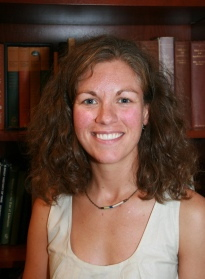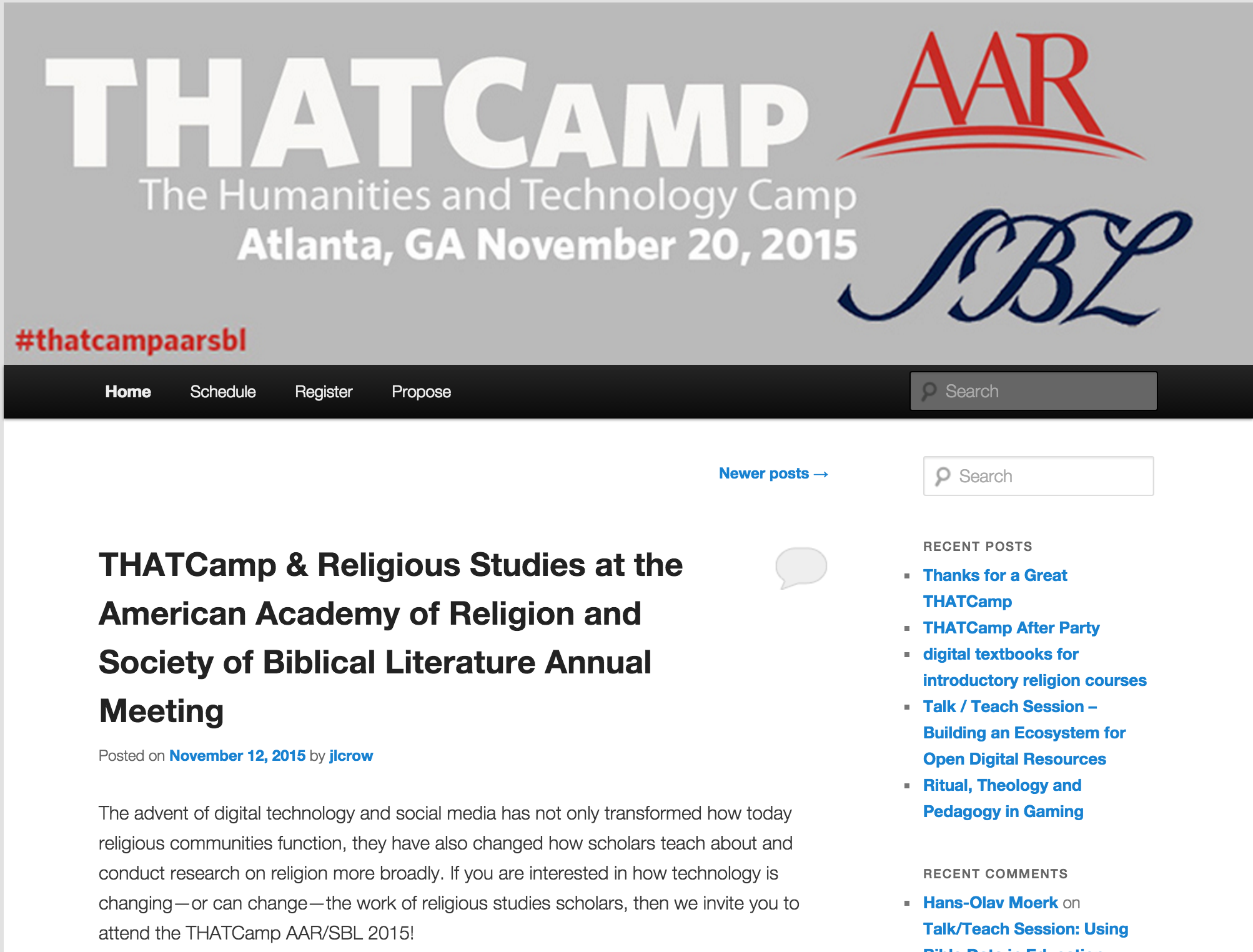
THATCamp at #aarsbl15: Conference, Technology, and Teaching
The day before the American Academy of Religion’s annual meeting, I went to THATCamp. THAT stands for “The Humanities and Technology Camp,” and it’s an unconference, which is nothing like an unhappy birthday except that there was tea. Participants create the content and facilitate the conversations at THATCamp. The event itself was ably organized by Eric Smith, John Crow, and Michael Hemenway. (I hear they’re taking volunteers for 2016 co-coordinators.)
When you navigate to the THATCamp website, you’ll see a tab for proposals. Before we met, participants posted suggested sessions, and early Friday morning, there was one last call for ideas. Then each of us voted for the sessions we wanted to see happen with stickers. Yes, there was tea and stickers. Better yet, the room was full of smart tech-savvy people doing innovative work in the classroom and in their own research.
The sessions ran all day, and I attended a few: Classroom Management Systems beyond Blackboard, Creative Use of Technology in the Classroom, Evaluating Digital Scholarship for Professional Review, and Digital Textbooks for Intro Courses. Rather than summarize the entire experience, I’ll focus on one workshop that relates to the teaching I’ve been writing about here. (You can read about more of the sessions by checking out THATCampAAR/SBL on Twitter.)
 First, there’s a lot to managing new technology in the classroom. Not quite a revelation, I realize. Listening to David McConeghy talk about using Slack this semester and Trello in the spring, I realized (again) that instructors can spend an enormous amount of time finding the right app for the job. In his session, McConeghy talked about adapting tools made for workplace communication (Slack) and task management (Trello) as classroom management systems (CMS). Most colleges and universities promote an institution-subscribed CMS, like Blackboard, CANVAS, or Sakai. My impression was that people in the room valued institution-subscribed CMS because they make it easy to communicate safely with students about protected information, like grades. (So can uni email accounts.) Many people preferred other platforms for specific tasks.
First, there’s a lot to managing new technology in the classroom. Not quite a revelation, I realize. Listening to David McConeghy talk about using Slack this semester and Trello in the spring, I realized (again) that instructors can spend an enormous amount of time finding the right app for the job. In his session, McConeghy talked about adapting tools made for workplace communication (Slack) and task management (Trello) as classroom management systems (CMS). Most colleges and universities promote an institution-subscribed CMS, like Blackboard, CANVAS, or Sakai. My impression was that people in the room valued institution-subscribed CMS because they make it easy to communicate safely with students about protected information, like grades. (So can uni email accounts.) Many people preferred other platforms for specific tasks.
On its homepage, Slack urges users to “be less busy!” Sounds good, but is it true? Based on what McConeghy said, Slack sounds like a great way to track small and large group conversations. Students can post in a shared classroom environment, they can create small group chats, and they can join topic-specific conversations. The instructor can see it all. McConeghy asked his students to “call out” group members when they missed class, a sly way to take roll. He could also see students’ progress on research and their collegial self-corrections. One student posted a broken link, and others let her know: “Oops! Here’s the right link,” she replied. (One drawback McConeghy noted is that there’s no way to see a single student’s contributions extracted from the conversations in which she participates.)
Thinking back about my course, I could imagine Slack’s utility. It would have helped me see how the podcast groups were working together (or not), and it might have motivated students who have been less active to be more active. If, for instance, they knew I could see not just which roles they had accepted (researcher, writer, techie, etc.) but also how (well) they had executed them, perhaps some students would have worked more or worked differently. When a group came up against a deadline without enough sources, maybe I could have stepped in and suggested some alternatives.
On the other hand, how much is too much? How much do I want to know? How much do I want to evaluate? Lots of questions come to mind, but in this case, I think the important one is whether Slack, for example, would have made my course better? Would it have helped my students reach a learning objective that was out of reach otherwise? I don’t think so, but I’m glad I know it is out there. Maybe it will be just what I need in my next course.
This is the 9th post in this series by Molly Bassett this semester (Fall 2015).